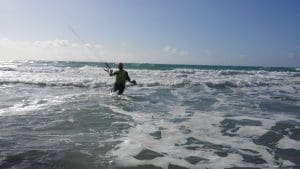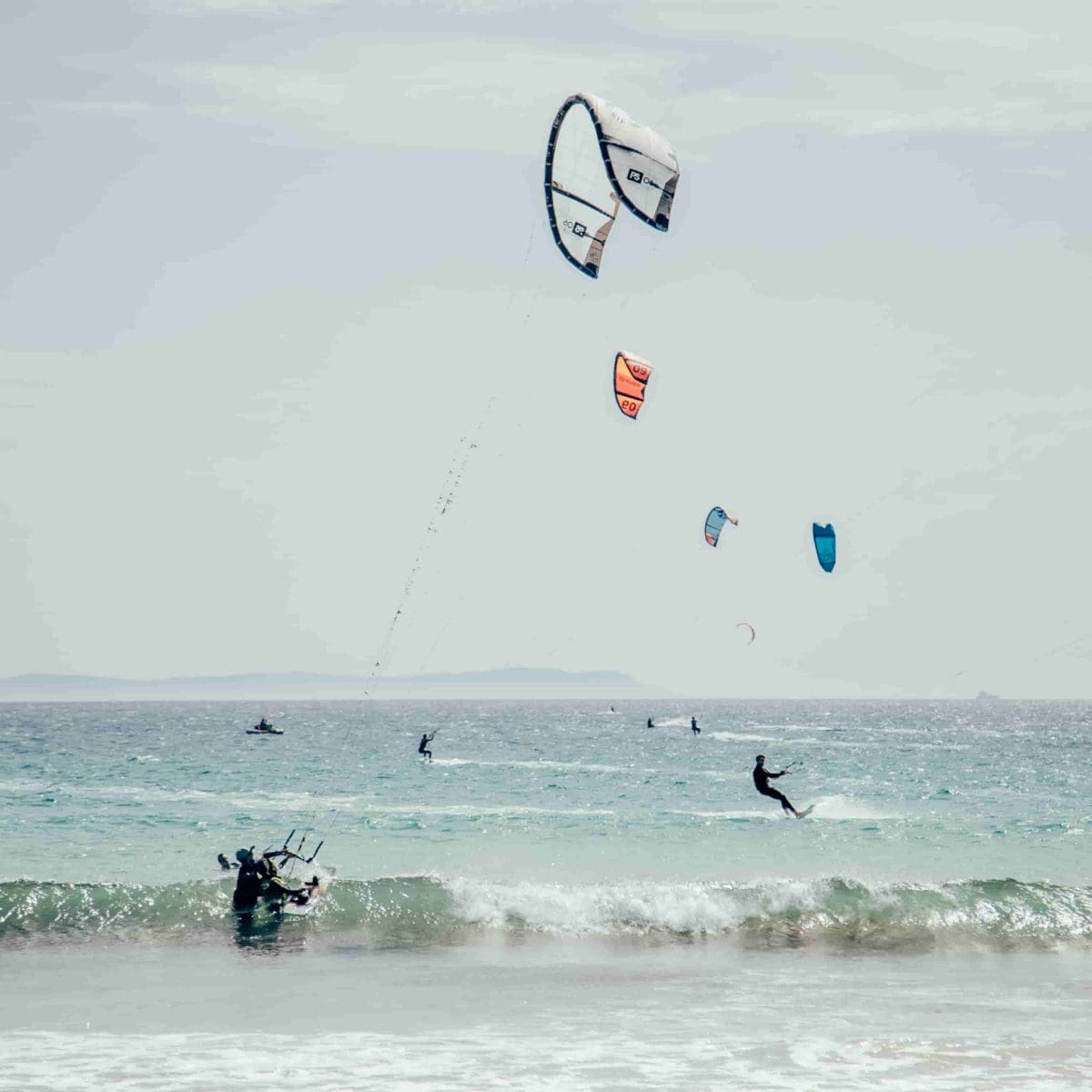Once you finish your kitesurfing course, and we highly advise you to always take a course with an official school.
You will be totally independent to kite on your own but you should always keep in mind safety comes first, and that if we comply with a series of parameters, kite and safety can be the safest sport in the world.
Aspects to keep in mind when you are starting out:
- Wind
- Force of the sea and tides
- Currents
When you get to the spot the first thing you have to take into account is the direction of the wind. Always with the wind at your back if the wind direction is on shore (sea to land) there is no problem, since this type of wind will return you to shore in a period of time that will depend on how deep you are with respect to to the shore.
Therefore, at the beginning we advise you not to go too deep since if you have something unforeseen you have less experience and therefore, the closer to the coast the better.
So with the Poniente wind in Tarifa that returns you to the shore, as well as the material that you can lose like the board, you can always navigate.
However, if we have land wind (off shore). The famous lift in spots like Los Lances Norte where the wind sends you towards Africa, forbidden to navigate unless you have the support of rescue boats.
You will not have that circumstance in Valdevaqueros where the wind is usually cross on shore, that is, parallel to the shore and you will always end up in the area of the dune.
Likewise, you must take into account the force of the wind. If when you get to the beach, your level is not yet advanced, you should know that with more than 20 or 21 knots (always taking into account the variable weight and size of the kite).
However, if you are a rider of around 80 kilos when the sand begins to lift on the beach and we have more than 20 knots long, it is more sensible not to go sailing since our level may not be adequate in in case we have some kind of mishap.
Likewise, a clear example of this type of wind is the east wind at Los Lances beach in Tarifa. It is very important that the wind brings you back to shore.
SURF AND CURRENT
Another parameter to take into account is swell and current. If the state of the sea is deep sea, strong waves or currents, it is better not to go sailing. When the swell exceeds two meters or we have a lot of current, it is better not to get into the water to avoid unnecessary mishaps.

With a west wind, the Fetch, which is the effect produced by the force of the wind on the sea, will generate a break or shore break that will make those first waterstars difficult at first.
We ask for a lot of patience at the beginning, which will drive you crazy but which you will get used to with practice and that eventually you will even love.
KITESURF EQUIPMENT
Finally, the material with which we get into the sea is very important. The wetsuit and the kite must provide maximum safety.
In winter we must get into the water with a minimum 4/3 neoprene, since in the event that we have a mishap and we spend more time in the water than necessary, we do not have any problem with body cooling.
Likewise, all the components of the kite must be perfectly checked: lines in good condition, safety system (quick release system) in perfect working order, leash in good condition, etc …
It is very important not to gamble in the water and all the equipment must be perfectly checked. From KitePassion Tarifa we always advise maximum safety and we always indicate that kitesurfing is the safe thing for us to do.
Good wind and maximum security !!
More info: Juan I. Fernández
+34 615683051



